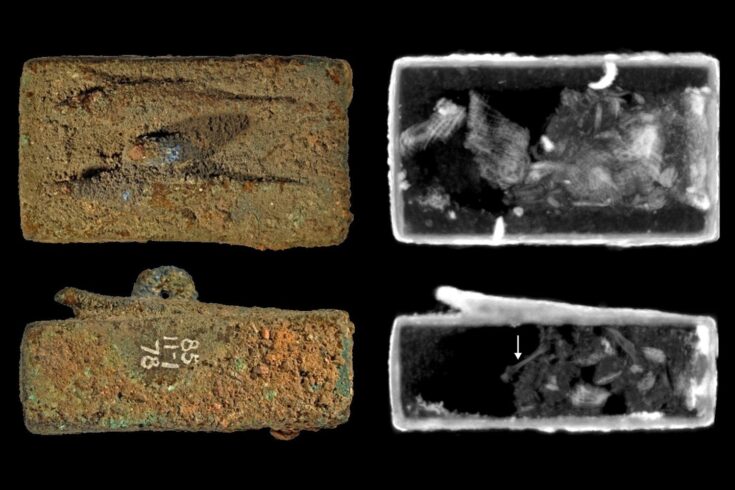The study used advanced neutron imaging techniques provided by the Science and Technology Facilities Council (STFC) ISIS Neutron and Muon Source research facility in Oxfordshire.
This enabled them to scan the inside of a group of six sealed first millennium BC animal coffins from ancient Egyptian sites such as the Nile Delta. In doing this they were able to produced detailed images of their contents without damaging the containers or the materials inside them.
Advanced physics meets ancient history
Neutron imaging is a process by which powerful beams of subatomic particles called neutrons are directed at materials so that scientific instruments can infer details about these materials based on the path that neutrons take through them.
It is more effective than X-ray imaging at seeing through metal and allowed the researchers to ‘unwrap’ the mummies and see organic remains through their bronze or leaded copper alloy containers.
This is the first time that we are aware of that neutron tomography has been used to look inside sealed metal animal coffins to see animal remains.
It has huge potential as a tool to help archaeologists analyse complex objects without causing any damage to them.
New insights into ancient Egypt
The imaging confirmed the coffins contained bones consistent with North African wall lizards which were wrapped in textile.
Animal mummification was common in ancient Egypt with some cases of people mummifying their pets to ensure their presence with them in the afterlife.
The lizards placed in these coffins were not pets but mummified as part of religious practices and beliefs that particularly thrived in the first millennium BC.
The lizards studied here are believed to have been linked with the cult of Egyptian creator and sun gods, such as Atum who was often depicted as a human-headed creature with a part-cobra part-eel body, as seen on two coffins the team analysed.
A powerful scientific tool
Dr Anna Fedrigo, Neutron Imaging Scientist at the ISIS Neutron and Muon Source and former STFC Marie Skłodowska-Curie Fellow, said:
Neutron imaging has many important applications in 21st century science.
This study shows that it can also shed light on the inner structure of complex archaeological objects, including their manufacturing techniques and contents.
The power of neutron imaging
Professor Roger Eccleston, Director, STFC ISIS Neutron and Muon Source:
This is fascinating work, using neutron imaging to look inside sealed copper alloy animal containers and to study the manufacturing process without damaging the artefact.
This work demonstrates the power of neutron imaging and the way it complements X-ray tomography in such studies.
Learning potential
Dr Aurélia Masson‑Berghoff, Project Curator at the British Museum:
In the first millennium BC, lizards were commonly mummified in ancient Egypt, as were other reptiles, cats, dogs, falcons, ibises, shrews, fishes and more.
Lizards, like snakes and eels, were particularly associated with ancient Egyptian solar and creator gods such as Atum, and perhaps in the case of Naukratis Amun-Ra Shena.
With the help of neutron imaging, we have the potential to learn more about the ritual and votive practices surrounding these once impenetrable animal coffins, the ways they were made, used and displayed.
The study is published in Scientific Reports.
Find out more about neutron imaging and the wide variety of research undertaken at the STFC ISIS Neutron and Muon Source on the ISIS website.
Top image: Neutron imaging of one animal coffin from the port of Naukratis in the western Nile Delta shows textile wrappings and an 8mm long bone (arrow). Credit: British Museum, UK Research and Innovation

